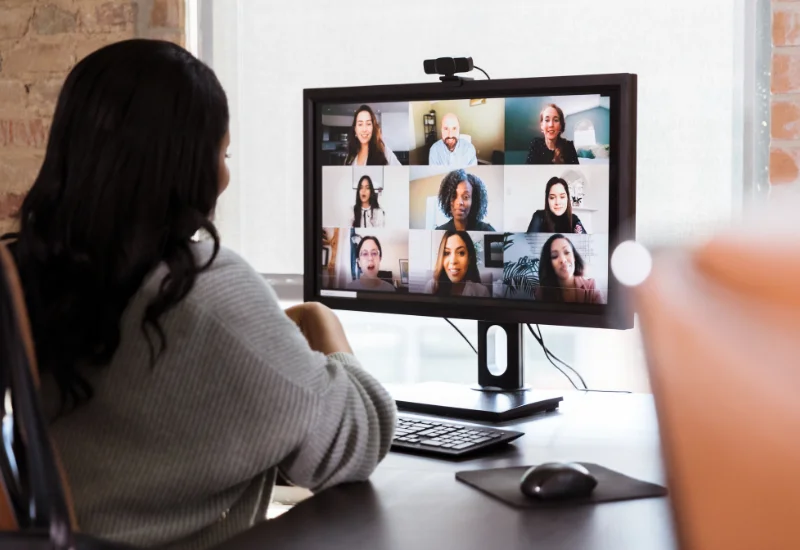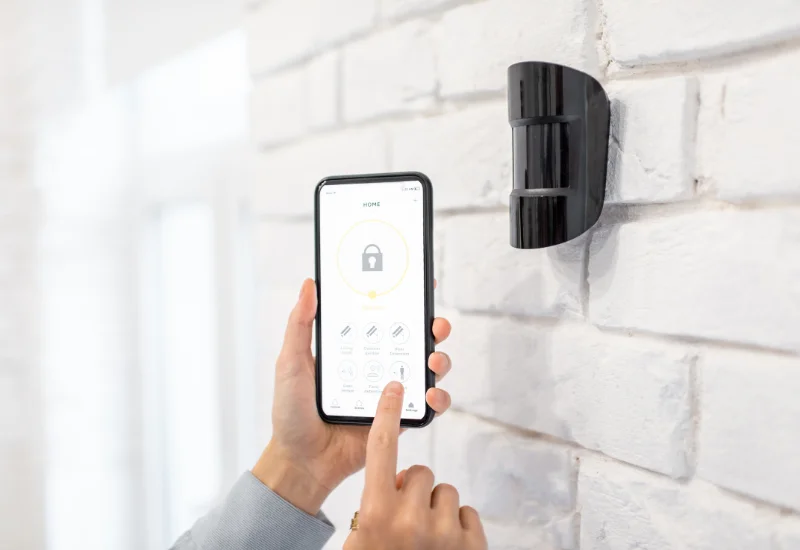In today’s world, workplace security is a top priority for any business owner. From theft and vandalism to cyber threats and violence, the risks are real and can have serious consequences. Keeping your employees safe and protecting your company is crucial, but where do you start? Don’t worry, with a few simple steps and the right tools, you can make your business a secure haven for all.
In this article, we will explore how you can improve and sustain workplace security in your company. We will cover these topics:
What is workplace security?
Workplace security involves a lot more than burglar-proofing your buildings. It’s about protecting the safety and security of employees, visitors, and the physical workplace environment. Theft, vandalism, violence, cyber threats, work-related illness and injuries: danger lurks everywhere.
Therefore, it’s important to have a workplace safety plan. This policy outlines the measures taken to maintain a healthy and safe work environment. Examples of workplace security measures include physical measures, employee education, reporting of security incidents, and the use of technology.
This policy should always be a work in progress. The COVID-19 pandemic has shown us how quickly workplace security needs can change. The rise of hybrid and fully remote work models for instance creates new security risks, particularly when sensitive data is involved. This means security measures should be regularly reviewed and updated.
Importance of Workplace Security
Workplace security is a critical concern for both employers and employees. Effective workplace security measures are essential to:
- Protect your employees. Workplace security measures are put in place to protect employees from harm, whether it’s from physical violence, theft, or cyber threats.
- Maintain a safe work environment. A secure workplace is not only important for employees, but also helps to build trust and confidence.
- Increase employee morale. By ensuring the safety of your employees, you’re creating a positive work environment that is free from fear and stress. When employees feel safe, they are able to focus on their work and be more productive.
- Protect your company against financial setbacks. Improving physical security can prevent the financial impact of security breaches.
- Demonstrate commitment to safety. By implementing workplace security measures, you show your employees that their employer cares about them and values their contributions to the company.

Workplace security tips
1. Physical security measures
Physical security measures are the steps a company can take to protect against unauthorized entry into the workplace, in order to keep employees and assets safe and secure.
Here’s a list of some physical security measures that can be implemented in the workplace:
- Access control systems. Examples are keycard access, biometric identification, or intercom systems to control who is allowed to enter the building.
- Surveillance cameras. Cameras can help deter theft and violence, and can provide valuable evidence in the case of an incident.
- Locks and security doors. High-security locks and reinforced doors help prevent unauthorized access to sensitive areas of the workplace.
- Alarms and security systems. Alarm systems, fire suppression systems, and other security systems provide an added layer of protection.
- Lighting. Adequate lighting can help deter crime and make it easier to identify any potential threats.
- Fences, gates and window bars. These make life a bit more difficult for intruders.
- Secure storage. Providing a safe storage place for valuable items, such as computers and sensitive documents, can help prevent theft.
- Controlled parking. Designated employee parking areas and security gates can help prevent theft of vehicles and other assets.
- Emergency response planning. Be prepared. It never hurts to have an emergency response plan in place and to conduct regular emergency drills.
2. Employee education and training
It’s critical to educate and train your employees on workplace security procedures. This helps create a safer and more secure workplace, and empowers employees to take an active role in protecting themselves and the company.
Here are some examples of trainings that can be implemented:
- Safety and security awareness training. Educate employees on common safety and security risks, and how to identify and report potential threats.
- Emergency response training. Teach employees what to do in the event of an emergency, such as a fire, active shooter situation, or a natural disaster.
- Data security training. Inform employees about the importance of protecting sensitive information, and how to properly handle, store, and dispose of confidential data.
- Cybersecurity training. Educate your staff on how to protect the company’s digital assets and sensitive information from cyber threats, such as hacking and phishing.
- Workplace violence prevention training. Teach your teams how to identify and report potential incidents of workplace violence, and how to respond in the event of an attack.
- Environmental health and safety training. Tell your employees how to identify and mitigate workplace hazards, such as toxic substances and electrical hazards.
- First aid and CPR training. Teach your staff how to provide first aid and CPR in the event of an emergency, such as a heart attack or injury.
3. Background checks on employees
However they may be controversial, background checks on employees are a common practice in many industries. These checks may include criminal history, education, employment history, and more.
If you do decide to conduct these checks, make sure to do so in a careful manner. Take into account only relevant and up-to-date information in order not to invade your employees’ privacy. If done carefully, background checks can help to identify potential security risks.
4. Technology use for improved security
In these modern times, ways to enhance security in the office are countless. A large number of digital tools are available to help you keep your workplace safe. These are just a few:
- Digital visitor registration. A good visitor management system improves safety in your company. It helps you keep track of who is entering and exiting the workplace, as well as ensuring that visitors are authorized and vetted before being granted access.
- Employee safety apps. These apps provide employees with a quick and easy way to call for help in the event of an emergency, allowing security personnel to respond quickly.
- IoT-based safety and security systems. Internet of Things (IoT) devices, such as smoke detectors and temperature sensors, can be used to monitor the building environment and alert security personnel in the event of an emergency.
Read more
Improve safety and security in your company? Here are 7 ways in which visitor management systems can help

5. Focus on safety for remote workers
Hybrid work allows people to work from anywhere. Remote workers can access company systems from home, and they often handle sensitive information. Proper workplace security measures help ensure that company information is safe and protects against cyber threats.
Here’s what you can do:
- Encrypt sensitive information, such as company files and email messages.
- Use a VPN (Virtual Private Network) for your remote team to log in.
- Require remote workers to use two-factor authentication (2FA) when accessing company systems and data.
- Install anti-virus software to protect against malware and other cyber threats.
Creating a culture of security within the workplace can help employees to understand the importance of security and their role in maintaining it. This helps to ensure that all employees are committed to maintaining a safe and secure workplace.
This can be achieved by:
- Regularly communicating and reinforcing security policies and procedures to your staff.
- Encouraging employees to report any security incidents or concerns.
- Involving people in security decision-making and risk assessments.
- Providing recognition and incentives for employees who practice safe and secure behavior in the workplace.
- Creating a supportive and inclusive work environment where your staff feels comfortable speaking up about security issues.
7. Review and update security measures
As stated earlier, workplace security needs can change overnight. The COVID-19 pandemic has made that crystal clear. New ways of working, such as hybrid work, call for new safety measures.
Regularly reviewing and updating security measures can help to identify areas for improvement and ensure that the workplace remains secure and up-to-date with the latest security practices.
If you own a business, protecting your people, buildings and assets is key. Developing a clear and comprehensive workplace security policy is crucial to ensure the workplace remains safe and secure. Luckily, modern technology and knowledge provides you with numerous possibilities to keep intruders out and employees safe. By implementing the above workplace security tips, you make sure to maintain a high level of security for your staff.
At Vizito, we take security seriously. To get a feel of how a modern visitor management system can help your business, try out Vizito during a 14-day trial. Chat with us to discuss how Vizito can help you improve your reception.
Got more questions? These are the 7 most common questions about digital visitor management – and our answers.



